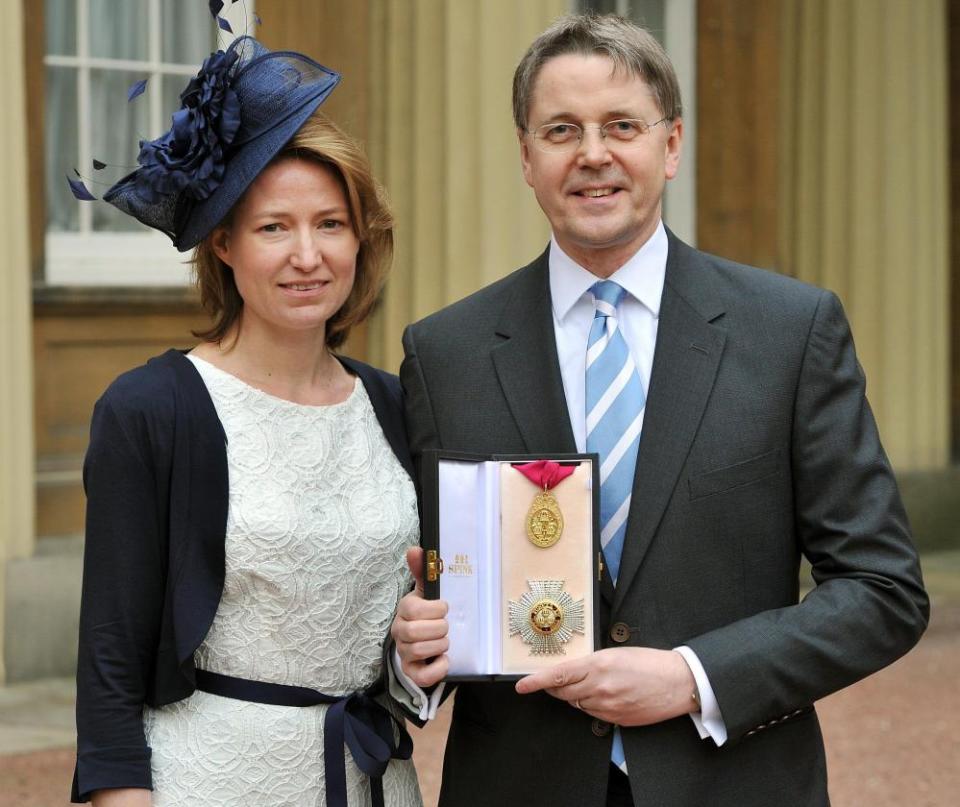My Jeremy was made scapegoat for Greensill affair, says Lady Heywood

Suzanne Heywood attacks ‘cynical attempt to shift blame’ for lobbying scandal on to her late husband, the former cabinet secretary
The widow of top civil servant Jeremy Heywood has accused Boris Johnson’s government of a “cynical and coordinated” attempt to deflect blame for the Lex Greensill lobbying scandal on to her late husband, after she forced it to show her documents that call into question the outcome of the official inquiry.
Suzanne Heywood has revealed for the first time how she used the threat of legal action against Downing Street last year to expose what she saw as deliberate efforts to blame Greensill’s arrival at No 10 on her late husband, who had no one to defend him.
The Greensill scandal broke early last year after it emerged that David Cameron, prime minister at the time of the appointment in 2012, went on to take a lucrative job with Greensill Capital after leaving office.
The story became a full-blown scandal after it was revealed that Cameron had been lobbying Johnson’s senior ministers, whom he knew personally – including chancellor Rishi Sunak – via texts, emails and WhatsApp messages to try to secure special funds to support Greensill Capital during the pandemic, and prevent it sliding into bankruptcy. It left the Tory government reeling as past and present ministers and their officials faced accusations of sleaze.
Related: Cameron and Greensill: a timeline of events in the lobbying scandal
In a new paperback edition of her memoir of the former cabinet secretary, What Does Jeremy Think?, extracts of which are published exclusively in Observer New Review, Lady Heywood tells how the feeling that her husband was being used as a scapegoat, and Downing Street’s initial refusal to allow her to defend him, forced her to threaten to take it to a judicial review.
The prospect of legal action, she says, finally forced Downing Street to agree to give her just 48 hours of access, alone, to 150 pages of her husband’s official papers. When she went through them she found a letter from an official who reported to the then Cabinet Office minister, Francis Maude, about Greensill’s appointment, dated 12 February 2012.
It said: “This arrangement has been agreed by both the Minister for the Cabinet Office [Francis Maude] and the Permanent Secretary for Cabinet Office [sic].”
Francis Maude told the Observer : “I have no recollection of signing this off and as the Boardman report makes absolutely clear Lex Greensill would not have come anywhere near government if he had not been pushed to do so by Jeremy Heywood.”
Lady Heywood also says she saw documents showing that the same official had emailed Greensill twice in the previous months to say she was getting Maude’s permission for the appointment. Maude told a parliamentary committee last June that he had “absolutely no recollection” of having appointed Greensill in 2012.
When the scandal broke last year, Maude was still working in government, as an unpaid adviser to Johnson on Whitehall reform. At the same time, he was running a company, Francis Maude Associates (FMA), which advises foreign governments on how to be more efficient. He left the advisory role last spring.

The documents, says Lady Heywood, completely undermined the narrative that had been promoted through a series of media stories, based on leaks, which laid blame heavily at the late cabinet secretary’s door. She also claims they contradicted the draft conclusions of the official review into the scandal by the solicitor Nigel Boardman, who had been appointed by the government, despite concerns about his conflicts of interest including his former association with the Tory party.
After seeing his draft conclusions (which said her husband was “primarily responsible” for the appointment of Greensill), Heywood confronted Boardman at a meeting. “Each time I did this, Boardman smiled again and moved on to his next conclusion,” she writes.
It was hard to accept people would try to shift responsibility for their own actions on to someone who was dead
Suzanne Heywood
The wording of Boardman’s final report was changed but avoided any definitive conclusion that Maude had approved the appointment. It said: “There is some evidence, albeit not conclusive, that this three-month appointment was formally approved by Lord Maude.” Lady Heywood writes in her book: “The report thus dismissed all the documentary evidence that indicated Maude’s approval.”
By contrast, it made much of the only document she found referring to her husband and Greensill, who had met when working in separate departments at Morgan Stanley Bank in 2005.
“The document was a covering memo written to the prime minister four months after the appointment of Greensill but on a different issue. It said in passing that ‘Jeremy has brought him [Greensill] in to work a (sic) pro bono in the Cabinet Office.’” This was used by Boardman to conclude again that Jeremy Heywood was “the person primarily responsible for Greensill being given a role in government”.
Heywood concludes that the government deliberately “tried to pin blame on a dead man” who could not defend himself, in order to deflect blame. She writes: “It was hard to accept that Jeremy had been let down so comprehensively by the institutions to which he had dedicated his life, or that people … would try to shift responsibility for their own actions on to someone who was dead.”
Heywood also reveals in the chapter that she submitted a freedom of information request to the Cabinet Office asking it to reveal any potential conflicts of interest Boardman had declared. She says Boardman had previously been a member of the Conservative party and had been on the board of the Department for Business, Energy and Industrial Strategy that had allowed Greensill Capital to access one of the government’s coronavirus loan schemes. But when the Cabinet Office responded, all of his conflicts had been redacted as had any mitigating actions, leaving her none the wiser. In response to a follow-up request, the Cabinet Office said answering the questions would be too expensive.
After the Boardman report was published, former prime minister Gordon Brown said the report was “so unsatisfactory” that he wanted its author to be called to explain publicly why “as a reviewer he did not interview key people, why he did not consider vital evidence from Lady Heywood and others that made clear Jeremy Heywood was implementing government policy decided by ministers”.

 Yahoo News
Yahoo News 
